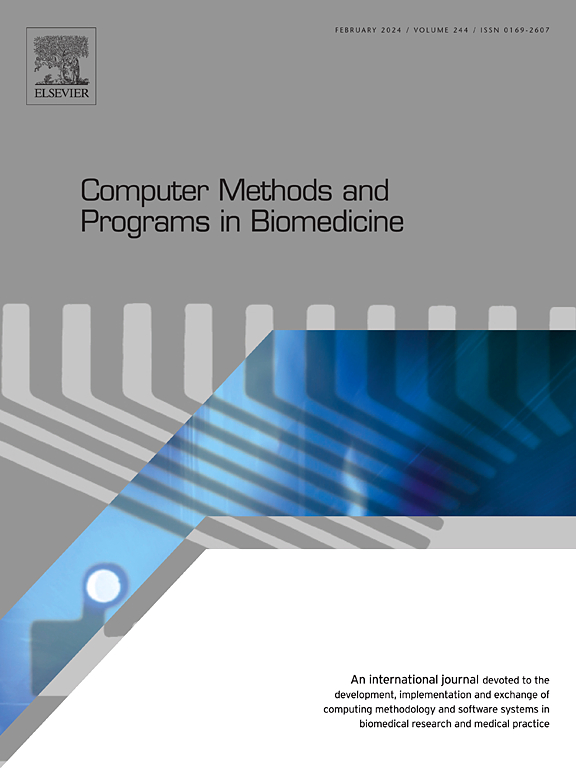Intra-clustering analysis reveals tissue-specific mutational patterns
IF 4.9
2区 医学
Q1 COMPUTER SCIENCE, INTERDISCIPLINARY APPLICATIONS
引用次数: 0
Abstract
Background and objective:
The identification of tissue-specific mutational patterns associated with cancer is challenging due to the low frequency of certain mutations and the high variability among tumors within the same cancer type. To address the inter-tumoral heterogeneity issue, our study aims to uncover infrequent mutational patterns by proposing a novel intra-clustering analysis.
Methods:
A Network Graph of 8303 patients and 198 genes was constructed using single-point-mutation data from The Cancer Genome Atlas (TCGA). Patient-gene groups were retrieved with the parallel use of two separate methodologies based on the: (a) Barber’s modularity index, and (b) network dynamics. An intra-clustering analysis was employed to explore the patterns within smaller patient subgroups in two phases: i) to determine the significant presence of a gene with a cancer type using the Fisher’s exact test and ii) to determine gene-to-gene patterns using multiple correspondence analysis and DISCOVER. The results are followed by a Benjamini–Hochberg false discovery rate of 5%.
Results:
This analysis was applied over 24 statistically meaningful groups of 2619 patients spanning 21 cancer types and it recovered 42 mutational patterns that are not reported in the TCGA consortium publications. Notably, our findings: (i) suggest that AMER1 mutations are a putative separative element between colon and rectal adenocarcinomas, (ii) highlight the significant presence of RAC1 in head and neck squamous cell carcinoma (iii) suggest that EP300 mutations in head and neck squamous cell carcinoma are irrelevant of the HPV status of the patients and (iv) show that mutational-based clusters can contain patients with contrasting genetic alterations.
Conclusions:
The proposed intra-clustering analysis extracted statistically significant relationships within clusters, uncovering putative clinically relevant connections and disentangling mutational heterogeneity.
求助全文
约1分钟内获得全文
求助全文
来源期刊

Computer methods and programs in biomedicine
工程技术-工程:生物医学
CiteScore
12.30
自引率
6.60%
发文量
601
审稿时长
135 days
期刊介绍:
To encourage the development of formal computing methods, and their application in biomedical research and medical practice, by illustration of fundamental principles in biomedical informatics research; to stimulate basic research into application software design; to report the state of research of biomedical information processing projects; to report new computer methodologies applied in biomedical areas; the eventual distribution of demonstrable software to avoid duplication of effort; to provide a forum for discussion and improvement of existing software; to optimize contact between national organizations and regional user groups by promoting an international exchange of information on formal methods, standards and software in biomedicine.
Computer Methods and Programs in Biomedicine covers computing methodology and software systems derived from computing science for implementation in all aspects of biomedical research and medical practice. It is designed to serve: biochemists; biologists; geneticists; immunologists; neuroscientists; pharmacologists; toxicologists; clinicians; epidemiologists; psychiatrists; psychologists; cardiologists; chemists; (radio)physicists; computer scientists; programmers and systems analysts; biomedical, clinical, electrical and other engineers; teachers of medical informatics and users of educational software.
 求助内容:
求助内容: 应助结果提醒方式:
应助结果提醒方式:


